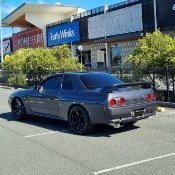QLD Whoretown...
Announcements
-
Similar Content
-
Latest Posts
-
By Dose Pipe Sutututu · Posted
If this was my own car, I would pull about 5 degrees off the CAS, run a wideband, and if that seems ok, send it. -
By joshuaho96 · Posted
Run a 7 psi wastegate and wastegate boost and it might be ok on the stock ECU. Basically you cannot run past the last load cell by a significant margin. -
By joshuaho96 · Posted
If there's no stutter in fuel pressure when the issue occurs then I'm not sure it's the fuel system necessarily. Do you have any Nistune logs when the issue occurs?
-








Recommended Posts